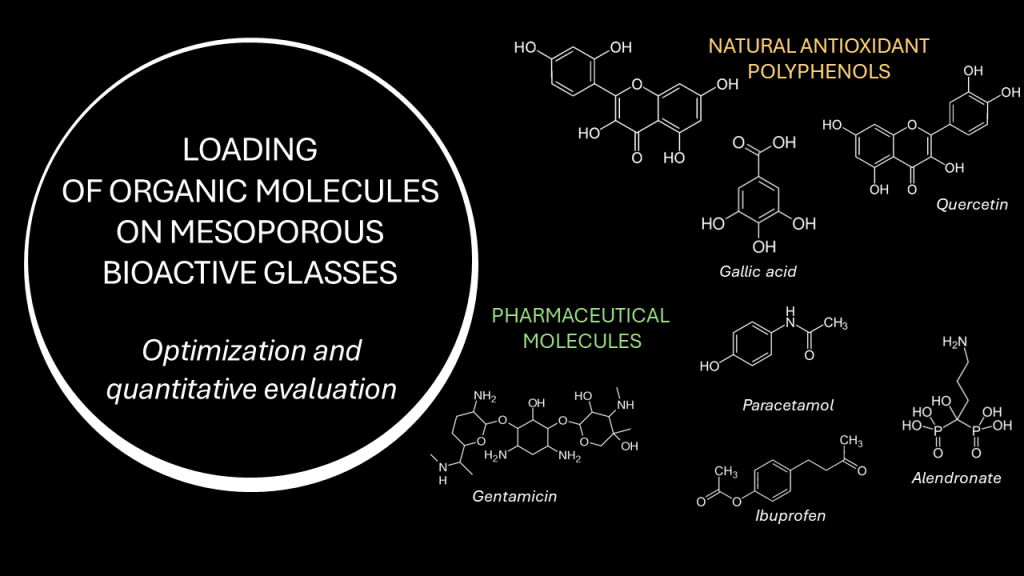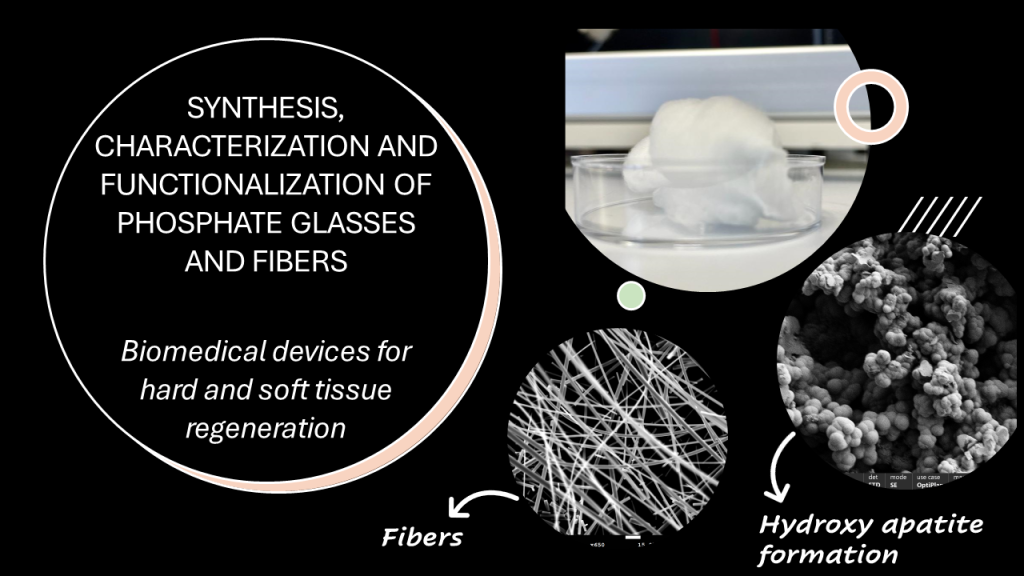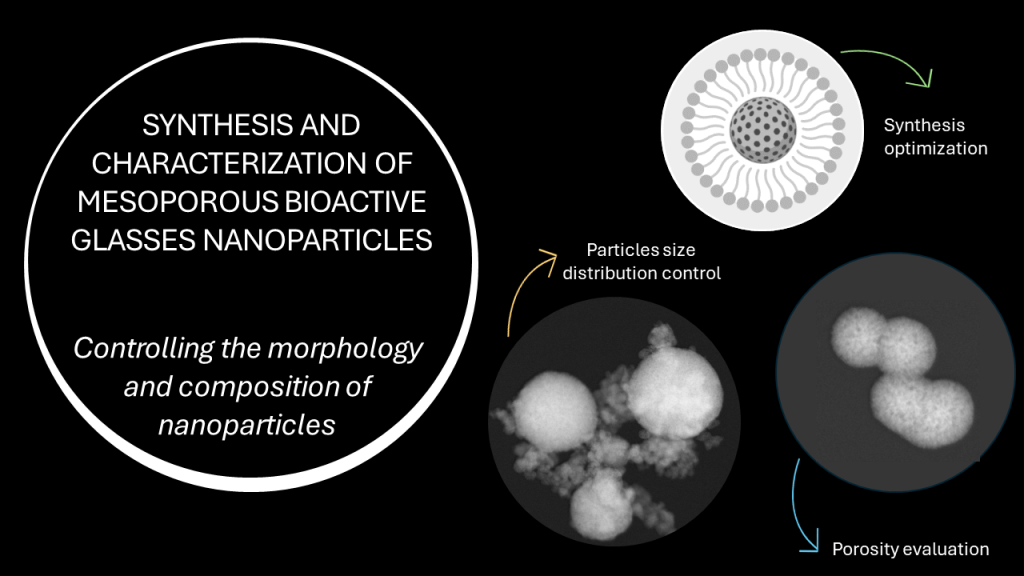.

The aim of this project is to dope bioactive glasses with different therapeutic inorganic ions, customizing the biomaterial properties to suit specific biological environments for different applications.
This research line started with extensive work on cerium and zinc doping and we are now including new therapeutic inorganic ions.
This project evaluates the loading process of interesting therapeutic molecules on mesoporous bioactive glasses to produce in situ drug delivery systems with tissue regeneration ability. We optimized the loading of a broad spectrum of molecules to customize the biomaterial response in the biological environment.


Starting from mesoporous bioactive glasses, we synthesized different composite materials to enhance tissue regeneration. We produced 3D scaffolds to increase the angiogenesis in hard tissue regeneration and hydrogels to facilitate chronic wound repair.
This project aims to synthesize phosphate-based bioactive glasses as new biomedical devices for drug delivery and hard tissue regeneration. Additionally, it is possible to produce fibers that can be used for the regeneration of soft tissue with high anisotropy, such as ligaments, muscles, or injured peripheral nerves.
In collaboration with Dr. Daniela Carta, Lecturer in Physical Chemistry, School of Chemistry and Chemical Engineering, University of Surrey (UK).


This project investigates the different variables in the synthesis of mesoporous bioactive glasses nanoparticles, to produce highly porous material with a narrow particle size distribution. Major effort is put into tailoring and controlling the nanoparticles composition and their doping with therapeutic ions.
In collaboration with Prof. Aldo R. Boccaccini, Head of the Institute of Biomaterials, Department of Materials Science and Engineering, Friedrich Alexander University Erlangen-Nuremberg (DE).
